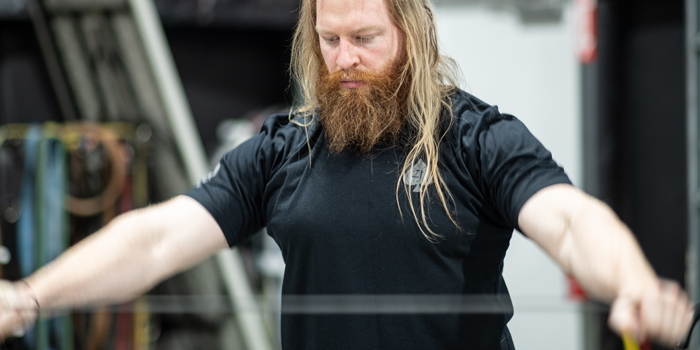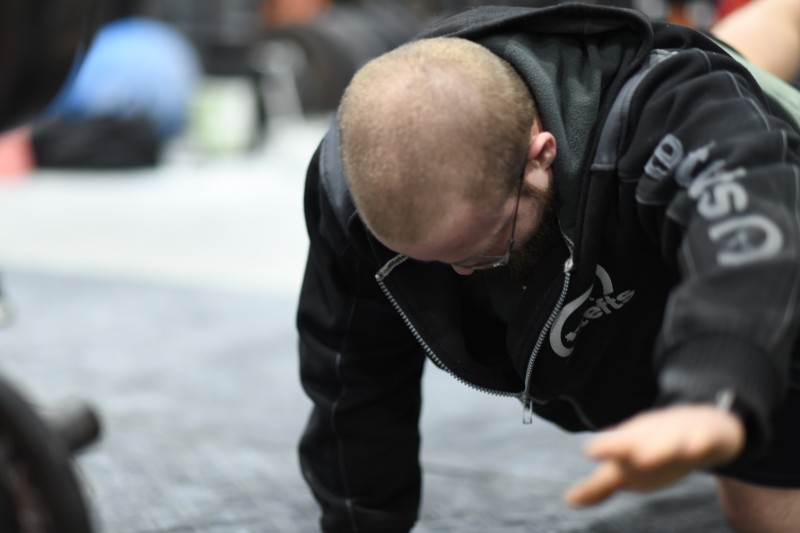
We all know the value of warming up before we lift or do any type of sports activity. What we may not be as familiar with is how to structure a warm-up and the fundamentals behind why we organize them the way we do. This article will help solve just that with a comprehensive review of the literature on approaches to warming up.
Warm-ups can be classified into two categories, broadly speaking; you have a passive warm-up, which consists of you trying to increase your body temperature without movement, so this can be done with some type of sauna, heating pad, etc. Then, you have an active warm-up, which consists of using exercise to improve flexibility, increasing core temperature and cognitive focus, and getting our muscles primed to do the work that will be asked of them shortly.
RECENT: 15-Week Peak Program Using RPE
Most athletes and coaches rely mostly on active warm-ups due to the many physical constraints of passive warm-ups. Fradkin and colleagues did a meta-analysis on the effects of warming up and found that more than 80 percent of the research shows a positive effect on physical performance.
When we hear the term static stretching, we think a lot of negative thoughts, and rightfully so. There is a good amount of literature that shows it can be detrimental, but this is when static stretching is done improperly. A study by Takizawa et al. looked at short-duration static stretching of 20 seconds or less without repeats after a 15-minute general warm-up and found no significant differences in the running time to exhaustion compared with general warm-ups only.

But that is for endurance racing. What about more anaerobic sports? What happens then? A study by Marinho et al. found that a 60-meter sprint after static stretching warm-up resulted in better sprint performances than dynamic stretching or without warm-ups. Athletes performed dynamic warm-ups and specific activities that reduced the negative effect of static stretching. So don’t give up on static stretching; just do it in short bursts and perform some type of dynamic warm-up afterward to get the benefits of both.
Dynamic warm-ups are everyone’s bread and butter when it comes to warming up; they have, by far, the most positive literature about them in terms of a performance boost, and they should be the foundation of your warm-up design. One of the downfalls to avoid that I see happen a lot is keeping it to a minimum. There is never a need for a 30-minute dynamic stretching routine, so keep it to seven minutes or less and focus on the key areas you will be training that day.
Remember: Getting your blood flowing and core temperature up takes care of a lot of the prerequisites of a warm-up. Don’t beat it to death and have it negatively affect your workout. Do not perform them in a ballistic effort; a lot of dynamic stretching looks fast in nature, but you don’t want to rely on momentum to get the body moving. A study by Pambroris et al. showed that a more controlled dynamic stretch showed greater improvements in strength.
If there is a long duration between your warm-up and your actual competition, there is evidence to show that putting on a jumpsuit or heating pads to keep body temperature up is beneficial. A study by Sargeant found that every one degree Celsius reduction in temperature led to a three percent reduction in the muscle power of lower extremities. This can be very beneficial for athletes to know so that they can keep their body temp up and not negate the benefits of the warm-up.
I would recommend, based on the research, some type of general warm-up that lasts five to seven minutes that increases the core temperature of the body, followed up with some static stretching for really tight muscles, but keep it to single bouts and short-duration holds. Then, I would do a five- to seven-minute dynamic stretch where the emphasis is on a more controlled nature, thinking about muscle activation and extended range of motion, but not forced and not ballistic. Once done, throw on some sweats to keep the body temperature elevated.
References
- Fradkin, AJ; Zazryn, TR; and Smoliga, JM. Effects of warming-up on physical performance: A systematic review with meta-analysis. J Strength Cond Res 24: 140-148, 2010.
- Marinho, DA; Gil, MH; Marques, MC; Barbosa, TM; and Neiva, HP. Complementing warm-up with stretching routines: Effects in sprint performance. Sports Med Inter Open 01: E101-E106 2017.
- Pamboris, GM; Noorkoiv, M; Baltzopoulos, V; and Mohagheghi, AA. Dynamic stretching is not detrimental to neuromechanical and sensorimotor performance of ankle plantarflexors. Scandinavian journal of medicine & science in sports. 2018 Oct 16.
- Sargeant, AJ. Effect of muscle temperature on leg extension force and short-term power output in humans. Eur J Appl Physiol Occup Physiol 56: 693-698, 1987.
- Takizawa, T; Yamaguchi, T; and Shibata, K. The effects of short-duration static stretching of the lower extremities after warm-up exercise on endurance running performance. Movement, Health Exerc 4: 27-35, 2015.










